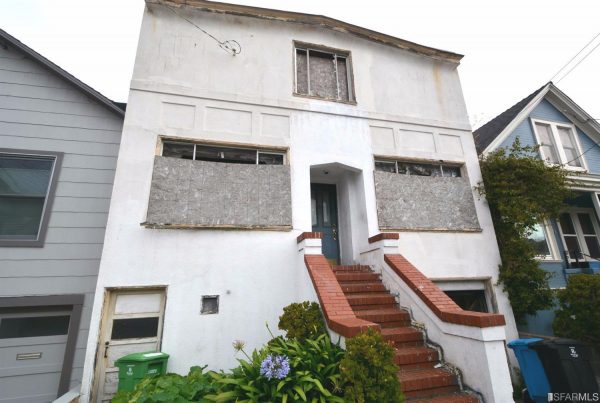Cheapest House in San Francisco Costs $499,000, Is Uninhabitable

You know housing prices in San Francisco are absolutely insane when the cheapest house on the market costs half a million dollars and is virtually uninhabitable. It’s no secret that buying a house in the Bay Area is next to impossible for the average person. According to Zillow real estate experts, the median listing price for […]
The American Town Where the Dead Outnumber the Living by a Thousand to One
Colma, a quiet Californian town of roughly two square miles is home to 1,700 living residents and over 1.5 million dead ones. Most of the town’s forever-silent population are people who lived and died in San Francisco, but, just like most of today’s living residents, couldn’t afford to spend their afterlives in the expensive metropolis. In […]
Winery Claims to Turn water into Wine in 15 Minutes, without Using Grapes
A couple of wine experts from San Francisco are apparently able to perform a miracle otherwise credited to Jesus Christ himself – they claim they can turn water into wine in a mere 15 minutes! The synthetic wine, made without the use of grapes, is produced by combining water and ethanol with flavor-compounds that can mimic […]
San Francisco Man Pays $500 a Month to Live in a Wooden Box
Unable to afford the soaring apartment prices in San Francisco, 25-year-old illustrator Peter Berkowitz built himself a box to serve as his bedroom. Living in the 8×3.5×4.5-foot ‘bedroom pod’ now costs him less than $500 a month. Berkowitz had originally planned to share a two-bedroom apartment with a friend in the city, but later realised that he […]
Non-Profit Turns Old City Buses into Mobile Shower Stations for the Homeless
One of the dire problems faced by homeless people across America is the shortage of public showers and toilets. Unofficially dubbed one of the homeless capitals of the nation, San Francisco’s 6,500 homeless have access to only about 16 to 20 shower stalls. But Lava Mae, a San Francisco nonprofit, is trying to make a […]
The Guerrilla Grafting Movement – Secretly Grafting Fruit-Bearing Branches onto Ornamental City Trees
There is a group of fruit lovers in San Francisco that practice something known as “guerrilla grafting” – they graft fruit bearing branches onto fruitless, ornamental trees across the Bay Area city. Having access to free fruit sounds like a wonderful idea, considering the number of homeless people who can rarely afford a decent meal, but guerrilla grafting […]
Real Estate Magnate Hides Envelopes of Cash around San Francisco as a Way of Giving Back to the Community

A mysterious San Francisco philanthropist has found a unique way of giving back to the community – leaving hidden cash all over the city. According to a Bay Area online magazine called The Bold Italic, an ‘anonymous real estate magnate’ emailed them to “say that they’d launched a campaign just last night where they’re hiding […]
The Bushman of San Francisco – Making a Living by Scaring People

The world famous Bushman of San Francisco, real name David Johnson, has been entertaining passers-by in Fisherman’s Wharf for over 30 years by hiding behind two Eucalyptus branches and jumping out at unsuspecting tourists as they walk by. The Bushman of San Francisco is an alleged homeless man who rakes in a reported $60,000 a […]
The Bone Collector – Man Amasses Creepy Collection of over 7,000 Animal Skulls and Bones

Ray Bandar, a retired biologist from San Francisco, has spent the last 50 years collecting thousands of animal bones. He estimates he has 7,000 skulls, 200 pelvises and countless other limbs from animals he mostly found and cleaned himself. “I enjoy removing the flesh from the skull and disarticulating the jaws,” Bandar recently said in an […]
The Jell-O World of Liz Hickok

Liz Hickok is a San Francisco based artist who best expresses her talent through unique Jell-o artworks. Liz is well versed in photography, video and sculpture, but she discovered her favorite art medium is Jell-o. We all crave a few spoons of wobbly goodness, from time to time, but Liz Hickok would rather use Jell-O […]
